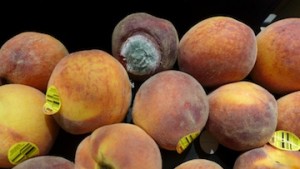Devil's in the details
What is going to stop fresh produce sales faster than a speeding bullet? Produce that doesn’t look nice and can actually look downright nasty.
It sounds simple and it should be; but here have been many times that I have walked over to a display and seen an item that should be on the discount cart or in the compost.
And what do I as a shopper do? I move to another part of the department and dismiss the full lot.

We aren’t talking tired and droopy as many of us feel in the middle of January.
I’m talking about great looking produce on the shelf but someone on your produce team didn’t decide to look for those evil nuggets that are going to drive your shopper over to the frozen section.
Mould on berries, spoiled herbs, black spots on apples, excessive bruising or cracks, or any other visual clue that could stop your customer from picking up an item are all items you need to train your employees to watch out for.
Don’t lose your shopper.
Do the walkabout. By walkabout I mean you actually walk through your produce department and with very fresh eyes look at what you are selling. This might actually be a better job for someone who didn’t stock the shelves – someone from the canned food section or maybe even a cashier but, ideally, never the shopper. But if staffing is tight you need to train them right.
Shoppers are a picky lot. Don’t give them a reason to leave your area.
The challenge lies in keeping up this habit on an ongoing basis and getting your full team to participate in keep the department looking fresh and those obvious misfits off your shelves.
Here are some tips on keeping your produce area in tip top shape:
1. Play “Spot the Difference” - walk over to a display and ask your staff to point out what looks fresh and what doesn’t – even the freshness game needs to be trained into staff.
2. Instead of looking at the full display of, say, peaches take time to run your eyes over individual pieces of fruit. Use whatever terminology you want here – looking for the needle in the haystack or the devil is in the details – the idea is to look at individual pieces of fruit or single unit packages.
3. Every now and then take a child’s viewpoint of your produce section – what has rolled under the table or dropped behind the boxes. Squat down and take a look.
4. Pick up bags of grapes or clusters of tomatoes to see any excessive bruising or moisture.
5. Train your eyes to spot dampness where it should not be – often that will lead to nasty things that need to be addressed.
How often should you do a visual “the devil's in the details” inspection?
Ideally on an on-going basis but at minimum three times a day should address most of the visual problems. For example: when you first walk into the department; mid-way through your day and at the end of your working day – when you close for the evening you are done.
Or pick specific time slots: 9 a.m or before the noon hour rush; before the evening shoppers.
Do you have a way of doing visual inspections? If so I would love to hear from you and include it in a future blog post.
